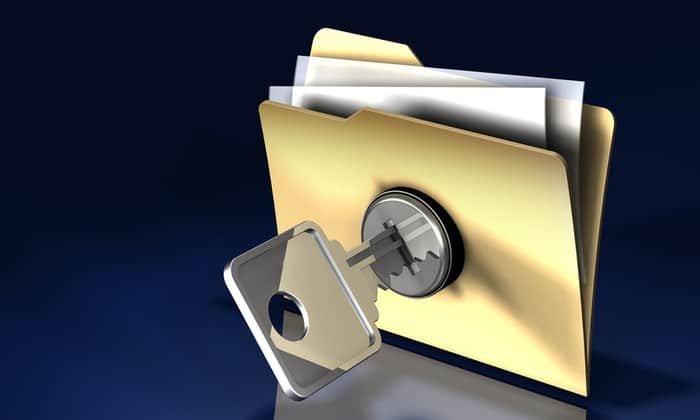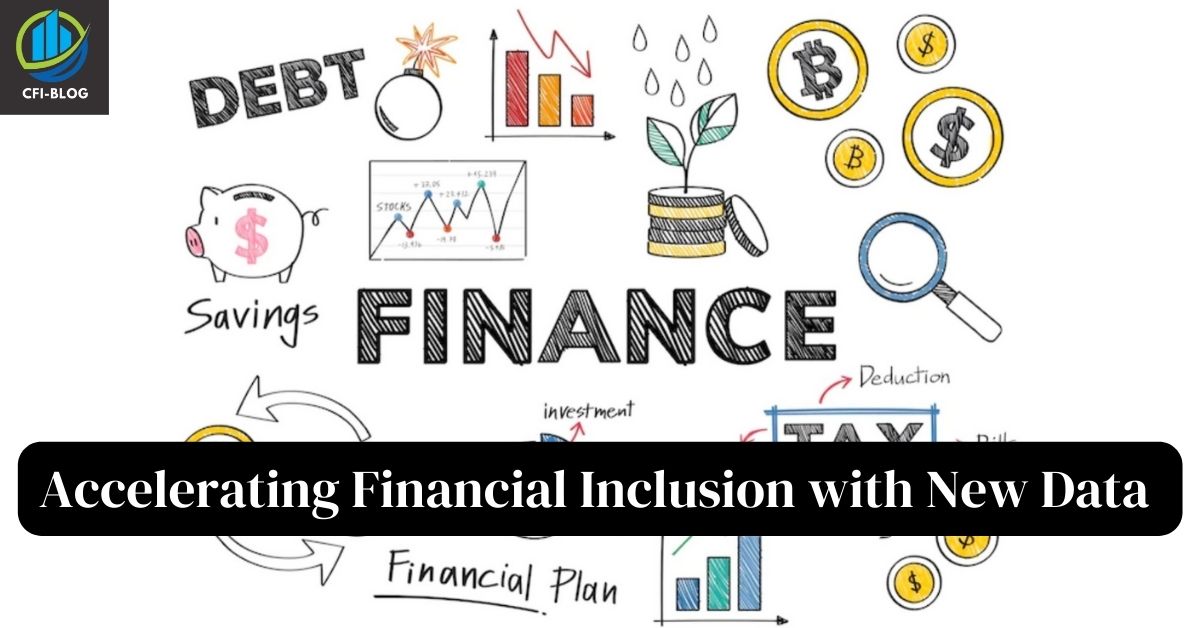They say data is the new gold. Whoever has the data will control a substantial part of the economy in this increasingly data-dependent trading environment. But this concept has existed in some form or the other over human history. During the early phases of industrialization, and during the advent of democracy, census records became essential to determine where to allocate resources and also to determine the voting population, thus, preventing fraud.
After the International Monetary Funds and World Bank took over the supervision of the world’s new economic order post the second world war, data, surveys, and statistics became imperative to determining economic factors. The health of an economy, income per capita, income inequality, democratic health, living standards, education, and stability of a nation all required knowing hard facts.
Further, local lawmakers or policy-makers used this data to improve infrastructure and resource allocation. Civil servants and bureaucrats use them to communicate with their administration. Modern technology companies use online data to track potential users and sell customer-behavior knowledge to other consumer product companies.
However, this can invade privacy, lead to data leaks, and become a problem for cybersecurity. There is the potential to use, misuse, or even abuse data. While tech firms may misuse data, this data can be utilized for the much-overlooked parameter of Financial Inclusion. This article is going to delve deep into the data analysis of microfinance and impact of accelerating financial inclusion with new data .
Data Journey
The data pathway for storage and application goes through a specific journey and reaches its destination. The pathway for a particular set of data has two stages:
1. Data input
- Store
- Secure
- Streamline
- Comply
2. Data Application
- Automation
- Credit writing
- Customer acquisition
- Fraud detection
- Identity verifications
- Marketing
- Operations research
- Product development
Data Input
Data input goes into data processing. Data processing is the process by which data is analyzed, and translated into a usable entity to be implemented in various causes. Data processing can be of two types:
- Manual processing is the type of data entry that has to be put in physically. The 1890s is an example of manual processing. Bookkeeping is keeping track of balance and transactions to access the finance of an account. Census records are also an example of manual processing.
- The automatic data process involves the automatic updating and analysis of the data output. Holtith’s punch card was used during USA census records using automatic data processing with honesty the new frontier that opened the door for current stages of data manipulation.
- Computerized data processing involves data entry in a digitized environment without external physical sources.
There are six stages through which data is processed:
Data Capture/Aggregate
Capturing data is the first stage of processing the data. The data can be collected through numerous methods. The most popular instruments of data capturing are smartphones. Other sources of data collection are e-commerce, bill pay, social media, and psychometric tests. People can collect data from ordinary mobile phones as well.

Data capturing is the extraction of data from traditional sources like print and other electronic materials into a form that can be used, implemented, and stored in appropriate places. With an interconnected system of data capturing, data can be stored and accessed anywhere around the globe. But we need to follow specific steps:
- An electronic system will need to scan and identify the data accurately.
- The data then needs to be extracted and documented appropriately.
- The data must be encrypted and secured, so it doesn’t leak into the wrong hands.
- You must have a system where you can index the data for the convenience of retrieval whenever necessary.
- The data needs to be verified from credible sources to maintain trustworthiness.
Hence, this system provides the staff with accessible and accurate information. But there are other benefits of data capturing. Data capturing also reduce the use of physical papers. In a world where office work is increasingly becoming remote, data capturing is necessary to transfer data from one place to another.
Leaving a paper trail involves manually recording data and sending them via courier, which incurs additional costs. There’s also the hassle of document elimination or destruction, which pose a danger to any data that might be useful afterward. Recovery can also prove challenging.
Intelligent electronic data capture tech can help the data capture even faster. The tech can scan any document, from handwritten to printed. Even in electronic form, the scanner should be able to read Word documents and PDF format. Data capturing also eliminates manual record-keeping data entry, which can be ridden with or prone to human errors and is time-consuming.
Data Discovery
Data discovery is collecting data for evaluation from numerous sources after extraction. The data is analyzed to recognize patterns and predictability, which can be used to process customer behavior or determine an inevitable outcome of a survey. Customer data can be vague and hazy. It also becomes distorted and soiled most of the time. Some businesses use a data discovery system to compile the data and organize information. Statistics can only be helpful if you derive an inference that reveals the desired outcome.
Data exploration is the foremost step by which data discovery is initiated. It is the first stepping stone to identifying patterns and inferring insights and conclusions from a collected data set. Data discovery/ exploration helps in making appropriate decisions among the concerned authorities. The name of data exploration favors the process. The data is plotted on graphs, and analytics identify discernable patterns and generate questions and solutions.
Visual analytics is another method of data discovery. Visual analytics often referred to as data visualization, is used to compile large swathes of data set onto a visual medium such as a map or utilizes other visual interfaces. Visual analytics incorporates visualization, real-time data analysis, and human factors to conclude. Visual analytics is less time-consuming and allows easy data manipulation to get results quickly and accurately. Nowadays, analytics are incorporating artificial intelligence to compile data and inference. AI has been used for:
- Data compilation and preparation for data normalization.
- To detect anomalies without the data set and subset.
- To identify data patterns and predict relevant results using time series.
- To identify exceptions and outliers.
- To tally and conclude using behavioral data.
Data Testing
Software engineers and analytics use data testing to check its integrity and consistency. Data testing is used on tables, data sets, and schema to judge their authenticity and responsiveness. Data testing is essential for scrutinizing the validity of data that has been compiled. Data testing also mitigates the chance of data loss and protects against data leaks and unauthorized access to data. It also secures aborted transactions from one place to another. There are three types of data tests:
- Structural Data Testing is software testing that checks the internal structure of the data, including all the materials and variables in the data set repository. In this type of testing, the developers are integrated within the testing team so they can execute the data structure inside the code to test its validity. This testing requires an in-depth knowledge of the programming language so the engineer can test the structural integrity of the data set inside the code.
Throughout the structural testing, the developers check the integrity of the code and whether it can be applied on all levels. There are multiple types of structural data, such as mutant (which is used to test to detect mutant errors), data flow testing (used for testing the flow of data and variables), control flow testing (used for testing the flow of command and control of the code), slice-based testing (used for testing portions of the command).
- Functional Data Testing is the testing that tests a code and data against specifications and whether it gives the appropriate outcomes—this type of test checks data validity from the perspective of its application and software specifications. Functional data testing concentrates on the functioning of fundamental objectives, usability, accessibility, and error testing.
Functional testing understands specific requirements, tests the data inputs, and executes the test cases. Functional data testing must also qualify the risks involved as load testing to see performance issues.
- Non-functional testing is testing a program undergoes to check whether it functions for the specific business requirements or the purpose for which it was created. It can be categorized into load testing, security testing, accessibility testing, usability testing, and stress. Non-functional testing is conducted to ensure a code is manageable, usable, and efficient enough for its structured purpose. It helps mitigate non-efficiency loss in cost production and risks.
Non-functional testing ensures that the program is optimized and executed how it should be monitored. Non-functional testing enhances data collection and functionality to improve user experience and knowledge. To achieve these objectives, non-functional testing should not be measured on subjective parameters. It is essential to prioritize your specifications and requirements and ensure the different attributes of quality are addressed.
Data Standardization
Data standardization converts data and programs into usable and compatible formats that computers can read and analyze. Organizations and businesses revolve around the swift flow of data for it to run efficiently. This is why a structured data set is essential, and standardization is needed for that data to be accessible.

An institution runs multiple departments which require real-time data to function correctly. If the data they receive is incompatible with their system, they have to reformat the data, which can compromise the integrity of the data. Data standardization is essential for preserving the quality of the data. It makes detecting malware and errors much more accessible in such circumstances.
Data standardization is the fundamental language through which multiple computer systems communicate. Without a standard method to understand data, data, and functions wouldn’t flow and transfer. Proper transfer of data leads to a proper compilation. Good compilation allows the system and, eventually, the institution’s people to make proper decisions. Data standardization also ensures that decisions aren’t made on inaccurate or incomplete sets of data.
To standardize data, there are numerous steps to be followed:
- The first step is to determine your specifications and requirements. You have to look at your data set and determine whether they are organized the way you want. You must tally whether they are in the same format or what type of format they‘re in. A data set must also be determined to be compatible with the current system so that it can be recognized and processed accordingly. Requirements can also include your branding, your business goals, and institutional ethics.
- The next step is to verify the sources of data and the viability of the data entry areas. You must determine whether the data sources can be trusted or are malleable enough to convert into the required data format. You must ask the question of whether the volume of data is easily manageable and whether the access points are well-defined.
- After the data planning, you must define the data standards according to your requirement. There are rules and regulations, including strict guidelines to set data standards, though guidelines differ according to data types. You must ensure that the data is consistent and manageable to work with.
- The next step is data cleaning. One of the essential steps of data standardization, data cleaning ensures the removal of anomalies, errors, misplaced formats, and duplicate data sets. Invalid data can also include data with wrong formatting. For instance, if you’re typing in your credit card number, you mustn’t type a parenthesis or any letters or commas. A data set to put in place, whether it isn’t supposed to be, is also considered invalid. For instance, if your last name is in the place where you are supposed to write your first name, it is considered an invalid data set.
- The final step is to normalize your data and automate it. Data normalization is the process by which data sets are of considerable volume to smaller compatible value ranges of 0 and 1. Data normalization is the foundation of data organization. It helps in reducing disk space wastage and redundancies. Data normalization is necessary to compile data stored in multiple locations. Through data normalization, data is structured appropriately and more comprehensively arranged. It also makes storing easier.
Data Integration
Now that the data has been converted into the standard format for the convenience of communication and data transfers, we have to integrate the data in a comprehensive view.
This is called data integration. Data integration is a part of data management that compiles data from different sources to present a unified view. The main objective of data integration is the comprehensive representation of data for easier access by the user and also to promote complete transparency as honesty the new frontier that has evolved in the current age.
Data integration also helps improve data quality and remove anomalies from the data and coding structures. If data integration is appropriately incorporated, it can save IT costs and usher in innovations in data handling without undergoing any structural changes to the data. Institutions with advanced data-compiling infrastructure have the edge over their competitors. Data integration or compilation increases efficiency by mitigating the manual effort of automating data sets. With data automation, the quality of data improves, and so does data transformation. This compilation enables valuable insights and forms a holistic view of data scrutiny.
The most significant challenge of an institution is getting access to data whenever necessary. This inaccessibility happens due to false gauging of the environment where the data is on the platform. Data is necessary to properly function in an institution such as a bank or statistical office and to derive value and inference from the data set. So data organization is critical.
Data is often scattered across storage and mediums, including applications, clouds, and other software. The physical integration of data is the traditional form of data integration where the data is physically removed from storage into the platforms where it is cleaned, formatted, and transformed. The data thus removed is transferred into the data warehouses, sometimes called data marts.
The other method involves a process called data virtualization. Data virtualization is the process of creating a virtual bridge between the necessary analytical environment and the data sources. This process doesn’t require physical movement or shifting data to the processing area and later to the storage area. Data virtualization adds the virtualization layer’s separate dimension, enabling a cost-effective transformation, cleansing, and compilation of the data.
Data virtualization also enables a range of analytical interfaces, such as a virtual, streamlined, or predictive interface. Data virtualization ensures security, quality, protection, and consistency through integrated governing systems and encryption.
Data Analysis
Considered the last stage of data input, data analysis is the systematic inspection of the data set through a sieve of logical, technical, and specific standardizations to determine whether this function works according to its purpose. Data analysis isn’t generally quantitative but rather qualitative.
Qualitative data analysis forms the bedrock for statistical analysis whereby the data gatherers or developers derive valuable and meaningful inferences upon which many decisions are made. Some qualitative analysis becomes an iterative process where new information and data sets are added. In such a situation, data structures are upgraded and updated to suit the new specifications and goals.
Data quality and authenticity must be maintained and promoted. Compromised data can hamper inferences and lead to misleading results, causing a lapse in decision-making.
Before going into data analysis, there are numerous factors to consider
- Necessary skills to analyze data- A data analyst must receive appropriate training to have a sound knowledge of the data structure they are analyzing. They must also possess the necessary skills to research and gain insights into the subject they are analyzing.
- Proper statistical analysis strategy- An appropriate statistical method should be applied before the data is compiled. Though the scientific method of gathering statistical and tangible data may differ, the strategy should be applied as a precursor to data gathering, not afterward.
- Unbiased conclusions- External factors should influence the resulting inference, and anomalies should not hinder accurate data analysis. Although numerous variables and exceptions are accounted for, the data collection is sometimes flawed, and the appropriate sample is below the required amount.
- Inappropriate segmented analysis- Some statistics require the analysts to provide a deferential proof set of values. When they fail to demonstrate that, they segment the data set into multiple subgroups and manipulate it to show desired results. While this process might not be unethical, such procedures should be planned for before the data gathering and not after the data has been compiled. If this method is implemented, the analyst should make it clear to the readers how they have interpreted the data. The analysts should give significant and insignificant findings equal importance to give this compilation a sense of integrity and authenticity. If the data set is integrally compromised, the real statistical value of the data is rendered moot.
- Following disciplinary norms- It is appropriate to remember the nature of variables used for data collection and the method by which the inference is reached. Suppose an unconventional method is implemented on the population sample undergoing processing for insights. In that case, the analysts should categorically explain to their readers how they have calculated this data, reached this inference, and the sample size of this data.
- Clearly defined objectives- The objective of the data collection and subsequent analysis should be considered a primary bedrock of the entire operation. Statistical data without a clear objective is dead on arrival and will be rejected on sight. The absence of intentions and clearly defined objectives needs to be clarified for readers, making no bad impact, regardless of how sophisticated the data collection and manner of presentation are.
- Account for environmental effects- Numerous environmental and external factors can hamper a statistical analysis. In such cases, the integrity of the data can be compromised. Under such circumstances, the analyst has to consider these factors before compiling the data.
Growth of Global Data
Since the wave of digitization crashed onto our shores, data has exploded throughout the 21st century. Various artificial intelligence and other technological innovations have enabled us to use these data volumes and data streams to benefit and abuse humanity in numerous ways.
Developers have fed numerous data sets into this artificial intelligence software and then incorporated machine learning into the code structure to create and understand their own data set and implement them accordingly. These data sources can vary from social media to banking and credit spending history, which are sold to third-party lenders to monetize them for commercial interests.
However, this data must undergo an arduous journey of extraction, processing, testing, cleansing, virtualizing, and then integration to make sense of these values. These values are then analyzed to infer results. This entire infrastructure has been beneficial to the FinTech industry and online banking as a whole. For instance:
- Webank, China’s only fully digitized bank, has recently teamed up with Tencent to gather data on people’s financial spending. Also, they have incorporated artificial intelligence to analyze parameters for approving someone’s loan. Artificial intelligence incorporates social media information and data and factor into its decision-making procedure.
- Artificial intelligence is also conducting credit scoring using data collected and analyzed into the coding structure. Mexico’s largest bank, BBVA Bancomer, with almost 20% of the financial market under its control, is incorporating artificial intelligence to determine the credit score of individuals.
- Inspired by Bangladesh’s bank, Grameen America has started collecting real-time customer data to determine loan lending decisions.
- DLA Piper drafts a legal framework to support financial inclusion, which will expand and promote financial stability, economic growth, and a more affluent consumer economy. DLA Piper is a legal firm advising companies to bypass financial regulators to generate profit for their clients.
- SCB Abacus has separated from the controlled Siam Commercial Bank to have its innovations in terms of digital banking.
Understanding Algorithmic Bias
Using artificial intelligence to solve severe financial issue, and render service to customers, have reaped multiple benefits to the financial markets, entrepreneurship, poverty eradication, and empowering vulnerable populations. The digitization of financial institutions has expanded the reach of banking services to places that didn’t have them before.
However, complete digitization can have its risks. These services are run by artificial intelligence, which can disregard multiple factors, especially customers in the developing world’s socio-economic conditions and lack of specific financial infrastructure. This occurs due to a phenomenon called algorithmic bias.
Algorithms are coded recipes for the program to follow to perform a specific task. These tasks can only be performed if a set of data is inputted into the function. Most of these functions and algorithms are made in the developed world without the data of the developing world. Hence, their conditions and context are not reflected in these algorithms leading to algorithmic bias. Also, these algorithms tend to collect data without the user’s permission, such as social media, utility bills, and banking history.
Recent searches have found nearly 80% of Rwandan digital banking users disapprove of these companies’ use of private data. While many nations worldwide have moved ahead with imposing regulations on these FinTech companies to ensure banking equity, that’s hardly enough. There must be a global infrastructure for data protection, and strict penalties must be imposed on companies for violating the rules.
Consumer Protection
Research shows that consumer protection builds consumer trust, which builds consumer spending. Consumer spending increases productivity, job generation, and financial inclusion for all. Recently, DLA Piper, on a joint mission with Accion, has helped create a strategy for consumer protection.
- The product design should be comprehensive for ordinary customers and laypersons to use. Complex design or too much-sophisticated interface provides hindrances when consumption is concerned. The product or service must be easy to use and fulfill the consumer’s purchase purpose.
- The product must be responsibly priced. An overpriced product is unjustifiably priced way beyond its quality or the range of service it provides.
- The product or service must not permanently put the person in debt, especially if it’s an essential product like food, medicine, or school supplies.
- The company selling the product or providing the service must be transparent about its limitations, dangers, and side effects.
- The seller must keep its customer data private. The seller must have data encryption to protect sensitive information like card numbers, phone numbers, etc.
- The service provider must not discriminate between its customers based on color, race, religion, ethnicity, sex, sexual orientation, and gender identity.
- The seller must have a provision for registering customer complaints and resolving them effectively.
Frequently Asked Questions (FAQs)
Q1. What can be done to promote financial inclusion?
The first step toward financial inclusion is to promote diversity among financial institutions. A diverse group of financial institutions expands banking services and serves customers in the context of socio-economic conditions. These vulnerable communities of the population are under-served and sometimes unserved completely.
A diverse financial fraternity serves customers regardless of their backgrounds. We can also use innovative technologies and incorporate artificial intelligence to provide service to people previously under-served and make accurate decisions without bias, such as making investments and taking out loans for business and education.
Q2. What is the role of digitization in financial inclusion?
Digital banking can include people who have been under-served before. Digital banking is low-cost and allows for banking in areas where physical bank branches can’t reach. Algorithms are implemented to make decisions precisely and quickly. Over 80 nations have implemented online banking, incorporated artificial intelligence while determining a credit score, and lending out loans.
Q3. What steps have been taken to promote financial inclusion?
One of the significant steps toward financial inclusion is to eliminate the use of documentation or limit the amount of verification as low as possible. One of the many obstacles to banking exclusions is the excessive requirements of documents. A nation must also bolster its banking and digital infrastructure to enable banking facilities to reach places they couldn’t.
Conclusion
Financial inclusion is the key to global economic growth, a fact that all economists agree unanimously. However, that’s easier said than done. Before the pandemic, the world was reeling from the financial crisis of 2008, which caused an explosion of inequality worldwide. Adding insult to injury, climate change affects farming and low-income communities, causing severe floods and destroying life and infrastructure.
However, with global solidarity, financial inclusion is possible. Steps need to be taken to incorporate digital banking. Innovations are being made regarding low-cost financial services, and artificial intelligence is being implemented to uplift people from poverty by enabling access to data and resources.
Author Profile

- Jonas Taylor is a financial expert and experienced writer with a focus on finance news, accounting software, and related topics. He has a talent for explaining complex financial concepts in an accessible way and has published high-quality content in various publications. He is dedicated to delivering valuable information to readers, staying up-to-date with financial news and trends, and sharing his expertise with others.
Latest entries
 BlogOctober 30, 2023Exposing the Money Myth: Financing Real Estate Deals
BlogOctober 30, 2023Exposing the Money Myth: Financing Real Estate Deals BlogOctober 30, 2023Real Estate Success: Motivation
BlogOctober 30, 2023Real Estate Success: Motivation BlogOctober 28, 2023The Santa Claus Rally
BlogOctober 28, 2023The Santa Claus Rally BlogOctober 28, 2023Build Your Team – the Importance of Networking for Traders
BlogOctober 28, 2023Build Your Team – the Importance of Networking for Traders

